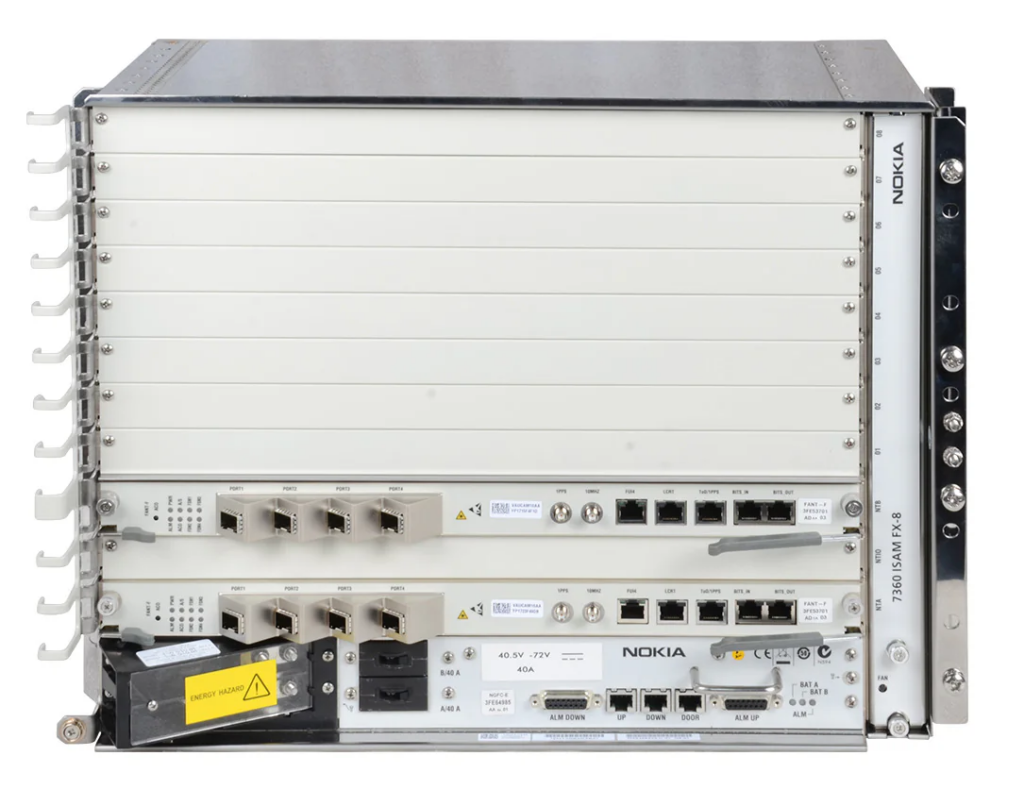by Fredy Künzler
Reading time: 5 minutes
Overbooking – how providers divide up the bandwidth
Most providers advertise their Internet subscriptions with the maximum available bandwidth – in addition to the price. These two parameters are easily comparable for customers and are often the decisive criterion when making a choice.
In the past, when fiber optics did not yet exist, Internet connections were built using two competing technologies: DSL (Digital Subscriber Line) in various forms (ADSL, VDSL, g.Fast) on the two-wire copper cable used for conventional telephony, and cable Internet on the coaxial cable used for cable television. Both technologies have in common that the transferable frequencies on the respective cable are physically restricted, which limits the achievable bandwidth.
Asymmetry
As most residential customers require more bandwidth for downloading than for uploading, the available frequencies were divided up accordingly, resulting in asymmetry: 100/20 Mbit/s with DSL offers 100 Mbit/s bandwidth for downloading, but only 20 Mbit/s bandwidth for uploading. This restriction also applies to cable Internet, although the achievable bandwidth is greater with cable. The DOCSIS 3.1 standard used in Switzerland could theoretically reach 10/1 Gbit/s, while the DSL technologies currently in use stop at 500 Mbit/s.
In contrast to cable and DSL, fiber optics knows no limits. It is therefore not surprising that almost all network operators rely on fiber optics and ignore newer cable technologies such as DOCSIS 4.0 or 4.1. A fiber optic network is much easier to operate and also consumes less electricity, which is of course much more economical in the long term, even if the construction of fiber optics requires high investments.
Network topologies
While the DSL network has a P2P (Point-to-Point) network topology, cable TV networks are structured as P2MP (Point-to-Multipoint). DSL customers have their own private line up to the DSLAM (Digital Subscriber Line Access Multiplexer, the provider’s device in the central office), which aggregates the DSL lines.
In the cable world, the corresponding device is called a CMTS (Cable Modem Termination System). This supplies all cable modems in the building, in the neighborhood or even in the entire district on a common coaxial cable tree and is often located in street cabinets.

The technically available bandwidth on the coaxial cable is shared between all connected customers. As CMTS are expensive to purchase, some cable Internet providers have actually connected too many customers to one CMTS and thus overbooked the network. Only when there are complaints is a second CMTS installed.
The two predominant fiber optic network topologies also come from this tradition. While the earlier “Telefönler” thought in a P2P point-to-point scheme (also known as AON Active Optical Networking), the “Käbeler” were on the move with a P2MP point-to-multipoint concept (PON Passive Optical Networking). These two network topologies have been the subject of much debate in recent years. A P2MP network topology can be mapped onto a P2P network topology, but not vice versa. A P2P network topology is required for the full freedom of providers with regard to the electronics used, which could be secured thanks to the so-called fiber optic dispute (see blog entry “Switzerland’s “Fiber Optic Dispute”).
XGS-PON: The quasi-standard
Most providers in Switzerland today rely on XGS-PON. As the name suggests, this is based on the PON topology and supports 10 (X) gigabit (G) symmetrical (S) bandwidth. This bandwidth is split between 2 and 128 customers using an optical splitter. Most providers in Switzerland use 32-customer splitters. This means that the nominal bandwidth of 10 Gbit/s is split between 32 customers.
The device used in the central office to aggregate customer lines is called OLT (Optical Line Termination). Various manufacturers sell OLT for XGS-PON; one device that is frequently used by various providers is the Nokia 7360 ISAM FX-8:

It consists of one or two (redundancy) supervisor cards, each with 4 x 10 Gbit/s Ethernet uplinks, and 8 slots in which the XGS-PON line cards are installed. Each line card has 16 10 Gbit/s connections, each of which can serve one splitter.
When fully equipped, the Nokia 7360 ISAM FX-8 can supply a maximum of 4096 customer connections. This is calculated from 8 (line cards) times 16 (connections) times 32 customers per splitter = 4096. The available maximum bandwidth of a supervisor card is 4x 10 Gbits/, i.e. 40 Gbit/s (gross), net 32 Gbit/s at full capacity. In nominal terms, this leaves around 7.8 Mbit/s (megabits!) of bandwidth per customer. However, the Internet subscription is actually advertised at 10 gigabits per second.
Overbooking
This approach is called “overbooking”.
In comparison, Ethernet on P2P network topology is better: a Cisco C9500-48Y4C switch has 48 ports for customer connections (1, 10 or 25 Gbit/s) and 4 uplink ports with 100Gbits/ each, although only one of these can be counted depending on the configuration. The bandwidth per customer is calculated as follows:
80Gbit/s uplink (net) divided by 48 customers = 1.66 Gbit/s per customer. Nominally, 1, 10 or 25 Gbit/s is sold depending on the configuration of the optics. The nominal overbooking factor is therefore considerably lower with a P2P network topology than with P2MP. This was already the case with the conventional telephone network compared to the cable network.

The business of the Internet provider
Is overbooking legitimate? Basically yes, the business of every Internet provider works like this: you accumulate the bandwidth requirements of all customers and produce the necessary capacity. Of course, a provider does not consider an OLT or a switch separately, but adds up all devices and aggregates the traffic in the backbone. Traffic and other parameters are continuously evaluated using telemetry and alerts are sent in the event of anomalies. The volume of data consumed is measured and capacities must be continuously adapted to consumption. Periodic upgrades are therefore necessary. However, when these upgrades actually take place can vary depending on the self-image, return expectations, peering policy or the personal taste of the network architect. A sarcastic recommendation in the industry says: “Design the capacity in such a way that no customer ever feels compelled to call support and complain about their slow Internet”.
Overbooking at the expense of quality
Overbooking is therefore flexible. (Nominal) bandwidth X is sold at price Y per month. That is what the customer signs up for. As a customer, you only realize that some providers overbook their available capacity far too much when you have signed a contract for one or two years, but only reach the bandwidth sold at 4 a.m. when most other customers are asleep. During primetime on Sunday evening at 8:30 pm, on the other hand, the Netflix stream is jerky, the shooter game lags and updating the apps on your cell phone takes forever. If this is the case, then the provider has overbooked too much *), but saved money at the expense of the quality of the user experience.
*PS: Most complaints about “slow Internet” are due to poor WiFi quality. Structural conditions often restrict the WiFi signal, which is why reliable speed tests must always be carried out with an Ethernet cable. Here we explain how to check the speed of your connection.
